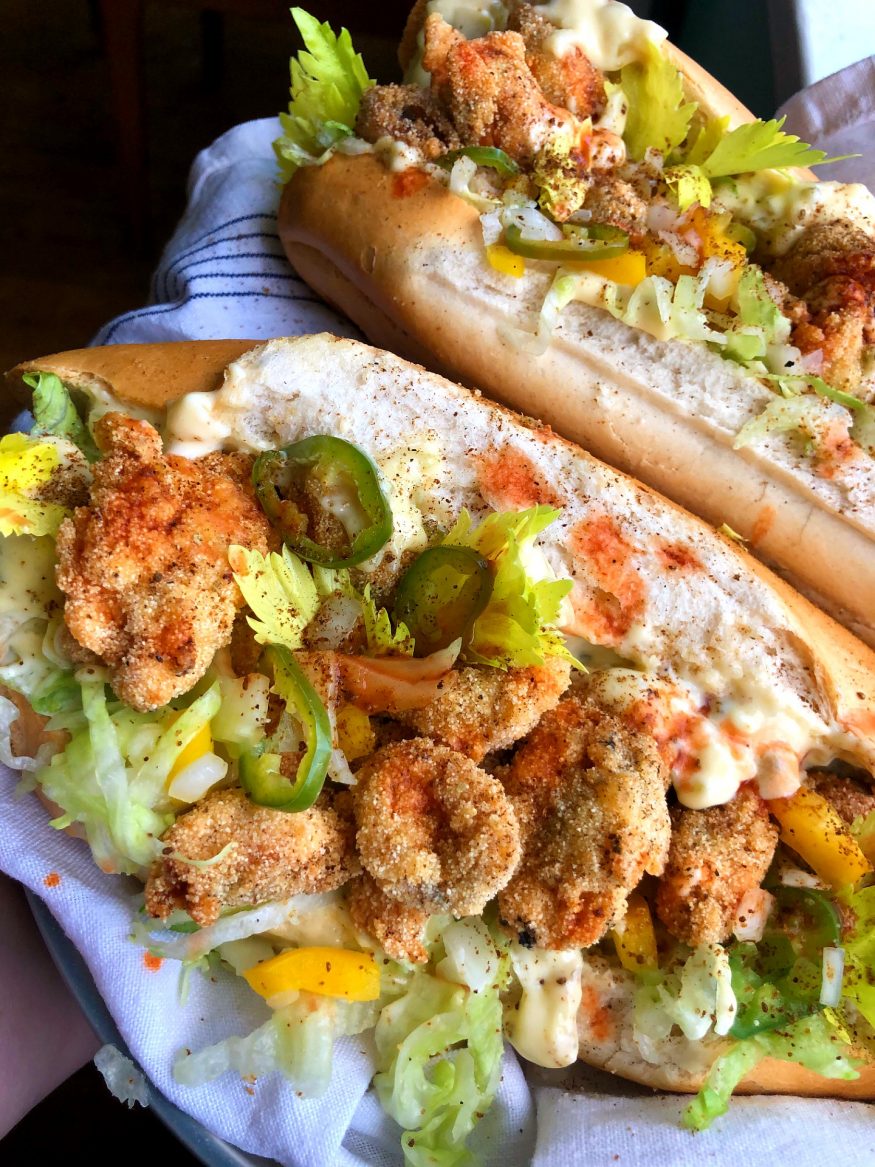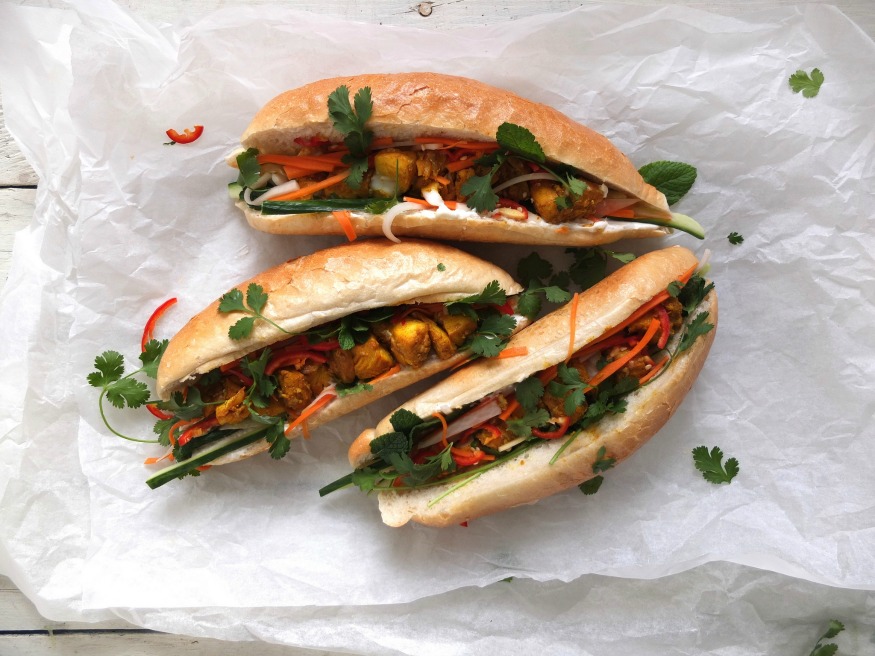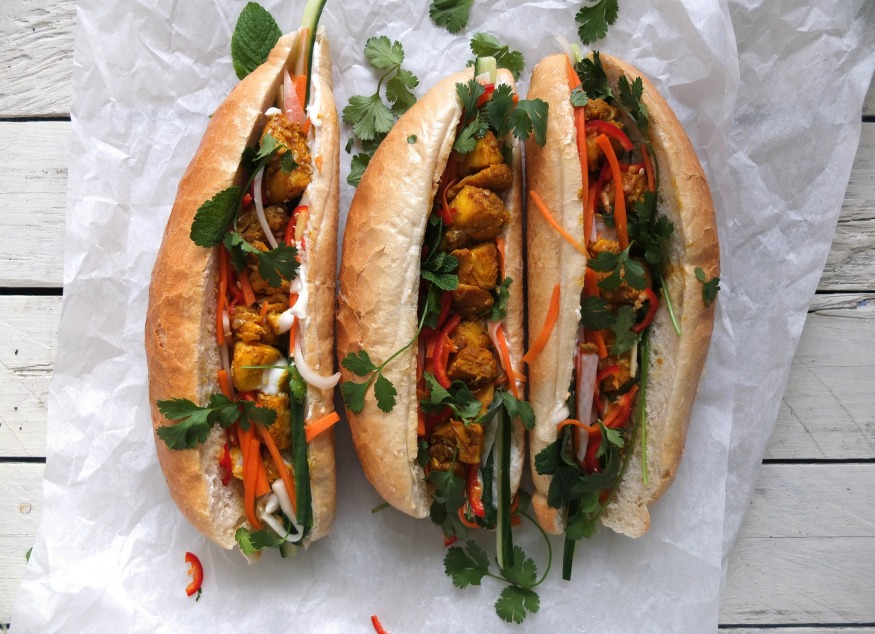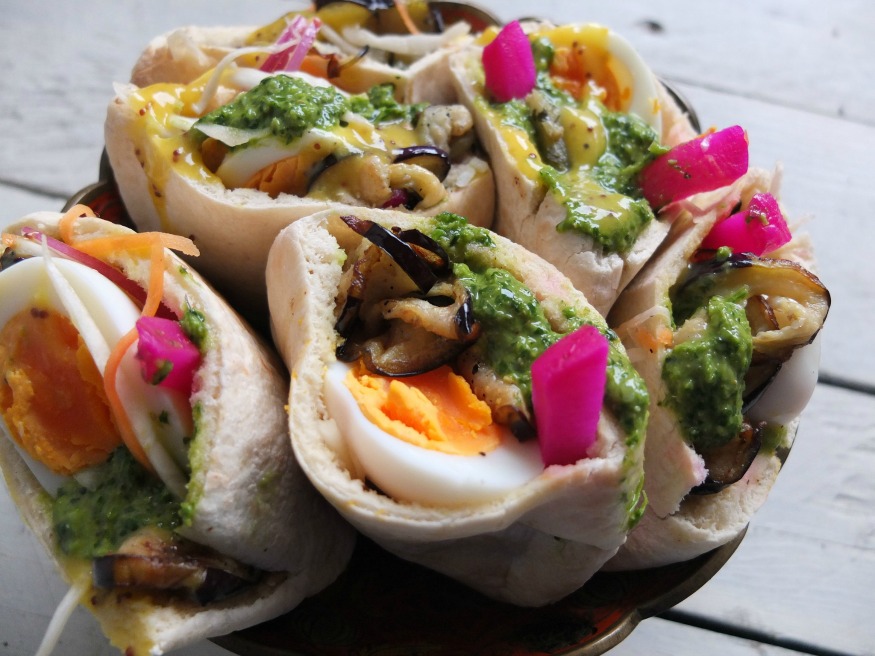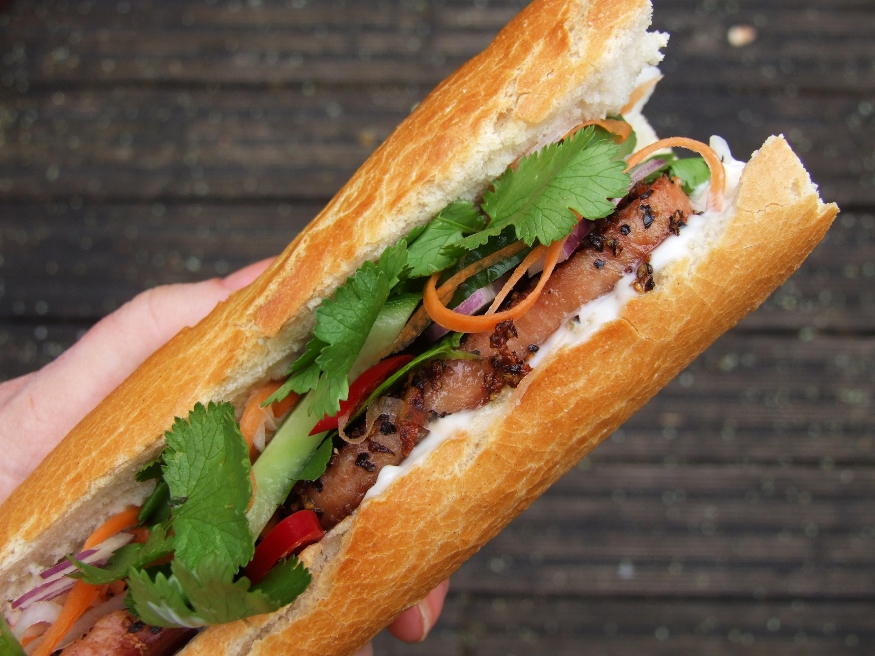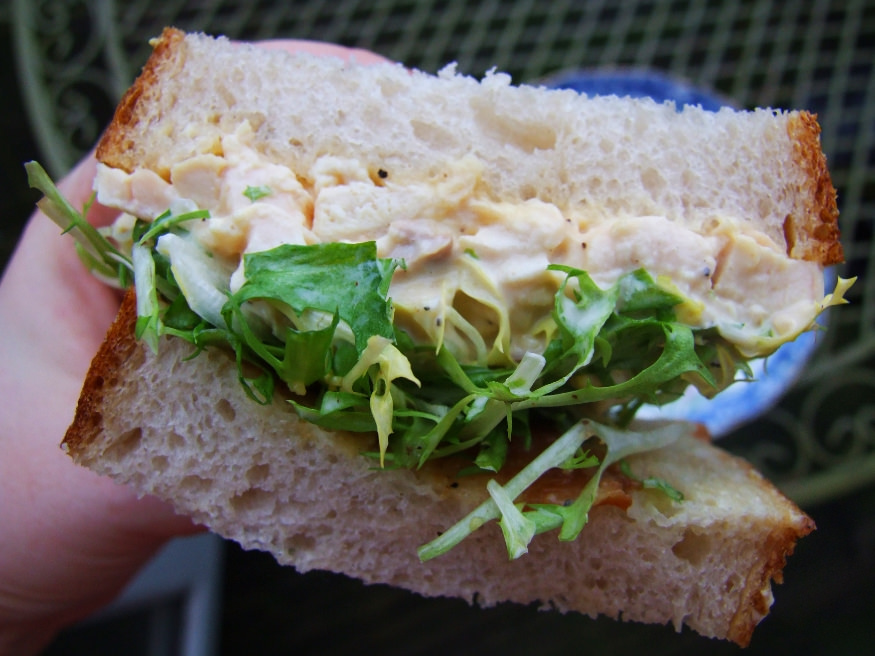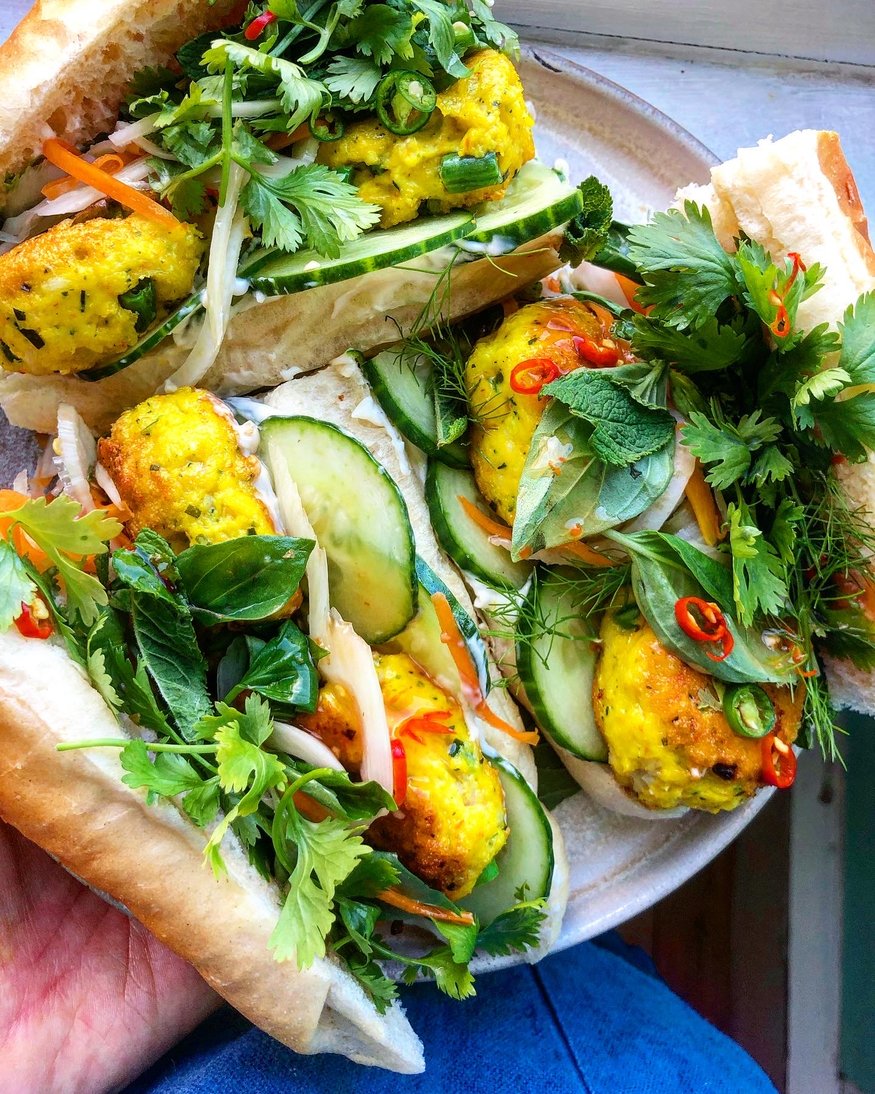
A quick hello from me today, to share this recipe for turmeric fishcake bánh mì with lemongrass pickled fennel (as promised on Instagram).
I’m a huge fan of the bánh mì as you’ve probably gathered from the number of recipes on this site (grilled pork bánh mì; turmeric fish bánh mì; SPAM mì; crab num pang) because I think it demonstrates what a great sandwich is all about, which is lots of contrasting flavours and textures.
Here, the fishcakes are fragrant with galangal, fresh turmeric and lime leaves and the sliced beans add pops of crunch. There’s acidity from pickled vegetables, an absolute truck tonne of herbs and one of my favourite bánh mì additions: sweet chilli sauce. It’s there for sweetness – I garnish with extra chilli for actual heat.
Spicy, crunchy, fragrant, sour, sweet and just a little creamy with mayo. The bánh mì is brilliant because it’s endlessly variable, and I see it as a lifelong project.
Recipe: Turmeric Fish Cake Bánh Mì
There are quite a few ingredients here but you could easily leave something out if you can’t find it or leave a comment and I will reply with thoughts! As I said, this is a sandwich to play around with.
This makes 12-14 fish cakes, which is enough for 3-4 banh mi (depending on the size of your baguettes).
For the fish cakes
500g skinless white fish
40g rice flour
1 tablespoon fish sauce
1 teaspoon sesame oil
4 cloves garlic
1.5 inches fresh turmeric root, peeled and grated (or use a teaspoon of ground turmeric)
60g green beans, sliced 1cm thick
8 lime leaves, finely chopped
1 inch galangal, grated
Pinch salt
Vegetable or groundnut oil for frying
For the lemongrass pickles
1 bulb fennel, finely sliced
1 carrot, peeled and cut into fine strips or grated
200ml rice vinegar
100ml water
80g caster sugar
8g sea salt
1 star anise
1 slice galangal (or ginger if you can’t find it)
2 lemongrass stalks, outer casing removed and bashed
A few white peppercorns
A few Szechuan peppercorns (optional but good)
To make the banh mi
Baguettes
Mayonnaise
Sweet chilli sauce
Herbs (Thai basil, mint, coriander)
Cucumber
Birdseye chilli
Make the pickle by combining all the ingredients except the vegetables in a saucepan. Bring the mixture to the boil to dissolve the sugar and salt then pour over the vegetables. Set aside.
Make the fish cakes by combining all the ingredients except the green beans and vegetable oil in a blender and blending to a fine paste. You want this mixture to appear ‘bouncy’. Stir in the beans.
Heat a frying pan and fry off a small piece of the fish cake mix to check the seasoning. If you’re happy, shape the fish cakes into balls then flatten into little cakes.
Fry the fish cakes in a couple of tablespoons of vegetable or groundnut oil – they won’t take long, a few mins each side, depending on thickness.
Assemble the bánh mì by stuffing everything into a baguette!
